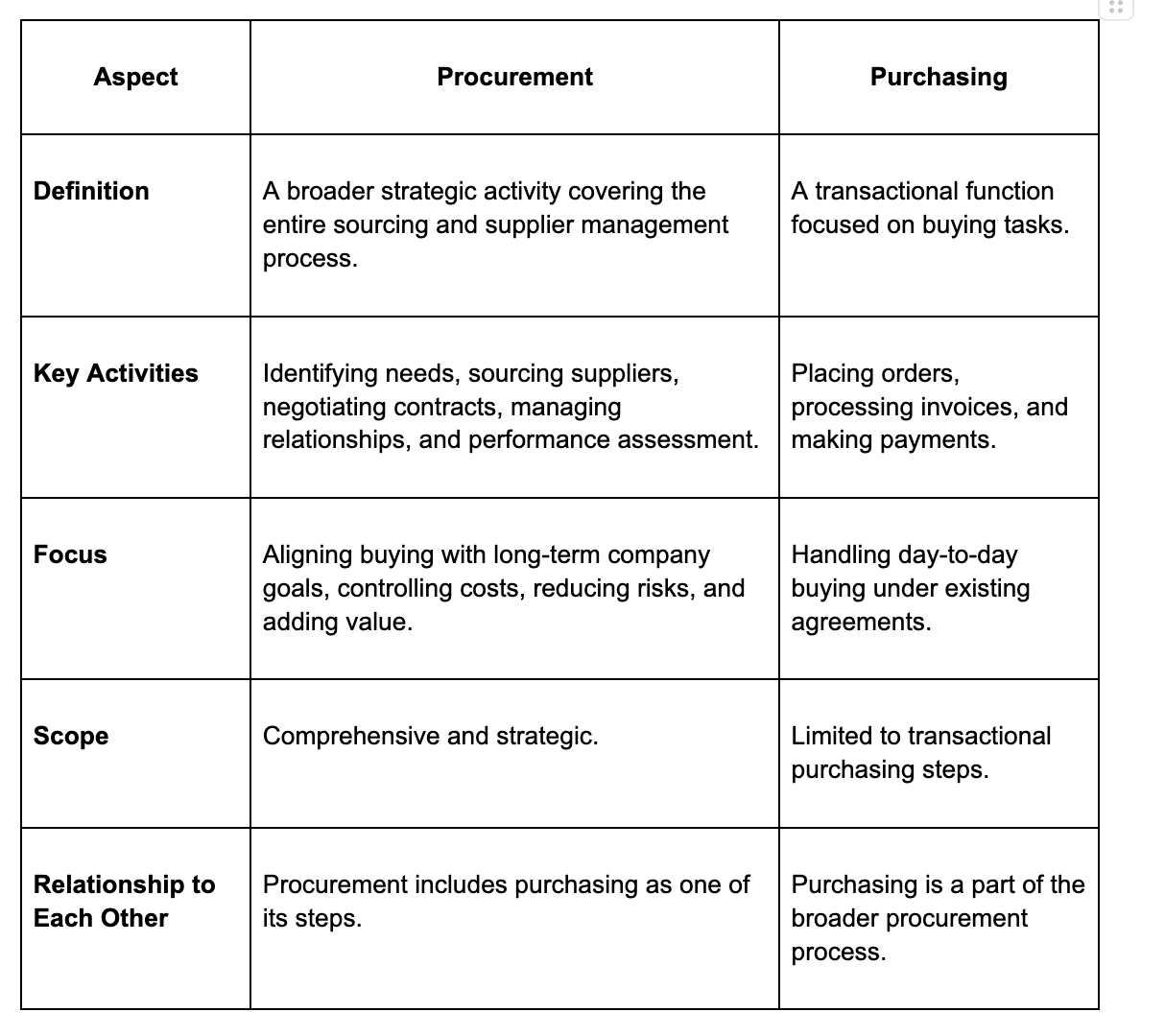What is Procurement in Supply Chain?
What is procurement in the supply chain? Simply put, procurement is the strategic process of sourcing and acquiring goods and services that an organization needs to operate and deliver value.
Within supply chain management, procurement is the critical function that ensures the right materials, at the right quality and cost, arrive at the right time to keep operations running smoothly.
Understanding procurement’s role in supply chain management is essential for businesses looking to optimize costs, reduce risks, and maintain a competitive advantage. This blog explores the key elements of procurement, how it differs from purchasing, why it matters, and how businesses can adopt best practices for 2025 and beyond.
What Does Procurement in Supply Chain Involve?
Procurement in supply chain is more than just buying goods. It’s a comprehensive function covering the entire lifecycle of acquiring products or services needed by a company. This process starts with identifying needs and extends through supplier management and performance evaluation.
Here are the primary stages that define what procurement in supply chain entails:
- Needs Assessment: The process begins by clearly defining what products or services are required. This depends on production plans, inventory levels, and upcoming projects. Accurately forecasting needs helps avoid both shortages and overstocking.
- Supplier Identification and Evaluation: Procurement teams research and assess potential suppliers based on factors like price competitiveness, quality standards, reliability, and compliance with laws and regulations.
- Negotiation and Contracting: After selecting suppliers, procurement negotiates contracts covering price, delivery schedules, payment terms, warranties, and service levels to protect the company’s interests.
- Order Placement and Inventory Management: Procurement manages order placement and monitors inventory to maintain the optimal stock levels that support uninterrupted production without tying up excessive capital.
- Supplier Performance Monitoring: Continuous tracking of suppliers ensures they meet agreed-upon standards. Metrics such as on-time delivery, defect rates, and responsiveness are commonly used.
By overseeing these stages, procurement ensures smooth operations, cost-effectiveness, and quality control throughout the supply chain.
Procurement vs Purchasing: Understanding the Difference
The terms procurement and purchasing are sometimes used interchangeably, but they refer to different parts of the buying process. Understanding the difference is key to grasping procurement’s strategic value.

Why Is Procurement Important in Supply Chain Management?
The significance of procurement in supply chain management cannot be overstated. Effective procurement impacts many areas of business performance:
- Cost Reduction: Strategic procurement enables companies to negotiate better prices, benefit from bulk purchasing, and reduce unnecessary expenses. According to The Hackett Group, companies using digital procurement tools can cut costs by up to 45%, and top procurement teams spend much less than others, thanks to better sourcing and processes.
- Quality Assurance: Procurement teams ensure suppliers deliver products that meet quality requirements. This reduces defects, returns, and disruptions downstream.
- Risk Management: Procurement identifies potential supply chain risks such as supplier insolvency, geopolitical issues, or natural disasters. Having contingency plans and alternative suppliers helps maintain continuity.
- Sustainability: Modern procurement increasingly incorporates environmental and social responsibility. Sustainable sourcing supports regulatory compliance and enhances brand reputation with customers and investors.
- Innovation and Competitive Advantage: Close collaboration with suppliers can lead to process improvements and innovative product developments, giving businesses an edge in the market.
Current Trends in Procurement for 2025
As businesses face rapid technological and market changes, procurement in supply chain is evolving. Here are some key trends shaping procurement today:
- Digital Transformation:
Procurement teams are adopting tools such as artificial intelligence (AI), machine learning, robotic process automation (RPA), and advanced analytics. These technologies streamline workflows, reduce errors, and provide insights for better supplier selection and risk management.
Did You Know? 50% of supply chain organizations have increased investments in AI and advanced analytics in 2024 to enhance procurement efficiency.
- Increased Focus on Supplier Collaboration:
Companies are moving away from transactional relationships toward partnerships that promote shared goals, transparency, and joint innovation.
- Sustainable Procurement:
Environmental, social, and governance (ESG) considerations are becoming essential in supplier evaluations. Businesses are prioritizing suppliers with ethical labor practices, low environmental impact, and strong compliance records.
- Diversification of Supply Base:
To reduce risk, organizations are expanding their supplier networks across regions and avoiding overreliance on single sources, especially in light of recent global disruptions.
- Continuous Process Improvement:
Procurement departments are regularly analyzing their strategies and adopting best practices to stay competitive and agile.
- The Hackett Group forecasts an 8% rise in procurement workload in 2024, underscoring the need for process improvements.
Become a Certified Procurement Professional
Our Certified International Procurement Professional (CIPP) and Certified International Procurement Manager (CIPM) certifications offer in-depth training on procurement strategies and supply chain integration.
Visit the Purchasing & Procurement Center to learn more and register.



